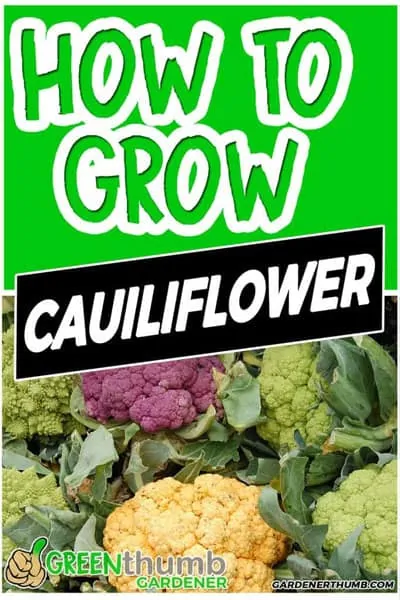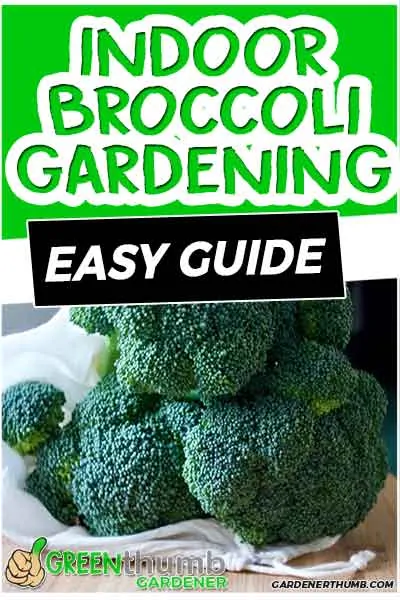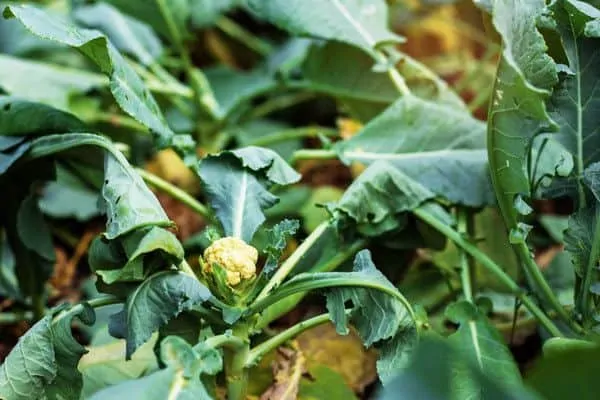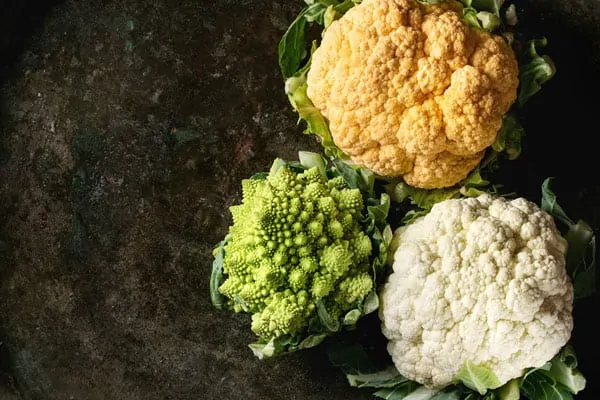Growing Cauliflower | Faux Mashed Potatoes
Last updated: 11/02/18
Cauliflower is one of those unique vegetables that you must get in your garden. Have you ever wanted to grow cauliflower in your garden? Are you a cauliflower lover and wanted to know more?
Look no further as you have found an epic guide on how to grow cauliflower.
Mark Twain said it best when he described cauliflower, “Cauliflower is nothing but cabbage with a college education.” I love this quote because when you really look at cauliflower, it does like a brain.
Growing cauliflower to put on your table is so good for your health. Just take a look below at the benefits, so why wait and just grow cauliflower in your garden.
Growing cauliflower is a simple and unique vegetable to grow. Cauliflower can be grown in the spring and fall months. Cauliflower seeds germinate best in soil temperatures of 80° F, so giving them a head start in the early spring months is best.
Cauliflower grows best when spaced about 15 inches apart. Cauliflower requires even watering throughout its growing cycle. Cauliflower requires an ample amount of nutrients to mature fully. Harvesting of cauliflower usually takes approximately 14 weeks from seed to table.
Check out this post here if you want a more slimmed down version of growing cauliflower.
Green thumb Gardener occasionally links to product and/or services offered by vendors to assist you with all your gardening needs. Some of these may be affiliate links, meaning we earn a small commission if items are purchased.
Want to Download a Garden Hack Guide for FREE

Enter your email below and we will send you a guide to help you SAVE money in your garden.
Cauliflower History
The origin of Cauliflower (Brassica oleracea) can be traced back as far as the 6th century BC. In the 1st century AD, Pliny the Elder wrote: “Ex omnibus brassicae generibus suavissima est cyma,” (“Of all the varieties of cabbage the most pleasant-tasted is cyma”).
This is most likely a description of a similar variety of cauliflower or member of the brassica family. This Pliny guy is the father of our modern encyclopedia, so he knew a thing or two about everything.
Cauliflower takes its historical root in the Mediterranean area of Europe. It is a member of the Brassica family of vegetables, so it shares many of the same traits as kale, cabbage, and brussels sprouts.
It likely originated from the area of Cyprus and then moved to Turley, Syria, Egypt, Italy, and Spain regions. It was cultivated and more popularized in Italy and France in the 1500s. Later it spread to India in the 1800s from England. India is the second largest producer of Cauliflower after China.
Growing Cauliflower for Keto Mashed Potatoes
Cauliflower has some real superpowers when it comes to benefits. It really shines as a member of the cabbage family which are reputable as a superfood that helps with the prevention of many diseases such as cancer. It is packed with nutrients, including vitamins, minerals, antioxidants, and other phytochemicals.
Having written this article to tell you all the wonderful benefits of cauliflower conjured up one benefit that appeals to our house. You can use this vegetable as a mashed potato or rice substitute.
This is popularized by the keto diet. I must admit that not a big fan of cauliflower or mashed potatoes, but my wife can surely make use of the cauliflower for some of our meals.
Here are some of the other benefits of cauliflower:
- Cancer-busting – Cauliflower is loaded with sulforaphane which is a sulfur compound that has been shown to kill cancer stem growth cells. Some scientists believe that this is key to help control cancer. This also helps with prevention, so get some helping of cauliflower in your diet.
- Rich in minerals and vitamins – 1 serving of cauliflower contains approximately 75% of the recommended daily value of vitamin C. Cauliflower is also a good source of vitamin K, protein, thiamin, riboflavin, niacin, magnesium, phosphorus, fiber, vitamin B6, folate, pantothenic acid, potassium, and manganese. Wow, this is impressive if you want to eat more cauliflower for these alone.

- Digestive Aid – Cauliflower packs a whopping amount of fiber to the tune of 3 grams per cup. Fiber is vital for sweeping out your digestive system to keep it going. Sulforaphane also helps protect your stomach by lining the wall. Cauliflower provides you with this health benefit by preventing some bacterial overgrowth in your stomach or too much clinging.
- Mashed Cauliflower – I know that I wrote about this above, but this really is a game changer if you like mashed potatoes. It is so easy to make and you really can’t tell the difference. I even eat this when I am not following a keto diet. Try it and you will be hooked.
Step by Step Guide on How to Grow Cauliflower
Growing cauliflower is a perfect vegetable that grows during the spring and fall & even winter in some areas. It is recommended you start the cauliflower seeds in seedling trays prior to planting in your garden or container.
You can get a head start while it is much colder out for the spring planting and not crowd your summer garden for a fall or winter crop.
This guide will focus on planting cauliflower from a seedling and directly into a ground garden bed or raised bed garden. Feel free to modify these steps if you plan to plant your cauliflower seeds directly into your garden bed.
You can also use containers for growing cauliflower. You may also purchase young cauliflower plants from your local nursery if you don’t want to start from seeds.
Materials Need for Planting Cauliflower
- Cauliflower Seeds– We highlighted some of our favorite varieties of cauliflower to grow below. Make sure you check the days to harvest on your particular variety to ensure you plan the time needed
- Fertilizer or compost– Giving the cauliflower a good start of nitrogen is recommended to grow successfully. It is best to start with a balanced fertilizer with an NPK ratio of at least a 10:10:10 to 14:14:14.
- Seedling trays (optional) – It is recommended to start these in a seedling tray to maximize the growth period. The summer garden gets crowded this time of year, so save some space and start the cauliflower plants in seedling trays.
- Container (optional) – This guide focuses on planting directly in your garden from seedlings. However, cauliflower plants do well in containers of at least 12 inch deep and at least 18 inches in diameter for most varieties of cauliflower.
Steps to Grow Cauliflower
- Place 1-2 seeds in each seed tray spot. Keep seed trays moist throughout the growing cycle.
- Thin each seedling tray to have 1 plant per seedling tray section.
- The cauliflower plants are ready to transplant anytime they are at least 6 inches and has at least 4-5 true leaves. Note: In the springtime, you also want to make sure that your daytime temperatures are at least 50°F for your area before transplanting your cauliflower plants. Roughly about 4 weeks before your last frost date
- Start by locating a space in your garden that you want to plant your cauliflower in. Ideally, a place that has full to partial sun is best for cauliflower.

5. Work in your compost or fertilizer into the soil prior to planting. This will promote growth for your cauliflower plants because they are heavy feeders and need lots of nutrients.
6. Dig with a hori hori knife or small shovel a small hole that is bigger than your potting seedling size. You can also work in a scoop of compost in the planting hole to also.
7. Plant your cauliflower plant in the hole you just dug.
8. Space each plant at least 6 inches apart for smaller heads and up to 12 inches apart for larger heads spaced in rows spaced 1-2 feet apart.
9. Cover the cauliflower plants with the remaining soil & water in.
10. Mulching is highly suggested for cauliflower plants to help control the moisture levels
11. It is recommended to let the cauliflower plants grow for 5-10 days before you add liquid fertilizer to your cauliflower plants.
Where is the Best Place to Grow Cauliflower
Cauliflower requires full sun in order to grow into large heads. It can tolerate partial shade, but just be aware that it will extend its harvest period since growth with be minimal. 6 hours of sun is best. It helps that there is some shade if you plant it in the summer because it does better in cooler weather.
The soil of where you plant your cauliflower requires a good amount of organic materials. The cauliflower plant is a heavy feeder, so make sure you get your soil amendments in prior to planting. See the fertilizer section below more recommendations.
You can also plant your cauliflower in a container. Just make sure that the soil you use has enough nutrients in it. You may also need to do regular feedings with a balanced fertilizer in your container.
Keep in mind that during the fall and spring times that the amount of sunlight is changing due to the shift of the earth. This means that the position of the sun during these times will vary. Be mindful of the position of the sun as

Further Reading
When is the best time for Growing Cauliflower
Cauliflower is a cool weather crop that does well in the fall and spring times of the year. It benefits from the cool nights and the wet conditions that these times of the year typically bring. You want to be careful as the weather heats up.
The cauliflower heads can start to flower as the heat signals to the plant that it needs to flower. This is the main reason why the spring and fall time is the best time to grow cauliflower.
Cauliflower can be seeded directly in your garden right at your last spring frost date. You can also get them started indoors about 4 to 6 weeks before setting them outside if you want to get a jump on the spring.
I prefer to grow cauliflower during Fall for a spring harvest (and sometimes winter harvest if planted late summer) as it is so low maintenance. Our zone lends an advantage that allows us to overwinter our vegetables with the addition of a hoop house. This cures the blues of winter to see healthy greens growing.
We do this with quite a few of our vegetables and is easy to do once you get the hang of it. Who doesn’t like growing plants in the winter time?
Check out this book on Amazon if you are interested in growing vegetables in the dead of winter. The author Elliot Coleman grows vegetables in Northern Maine where the winters are long and cold without any fossil fuels.
Click here for the latest Amazon price of Eliot Coleman’s book, “Four-Season Harvest”.
Companion Planting for Cauliflower
Companion planting is a practice of placing 2 different types of plants near each other. These plants are mutually beneficial for each other for many different reasons. Cauliflower can certainly benefit from this technique.
The plants assist each other by attracting beneficial insects or help with certain nutrients in the soil. Mother nature’s symbiotic boost certainly helps to balance the environment out.
One of the oldest examples of companion plantings is the Three Sisters. This type of companion planting consisted of corn, squash, and beans in a cluster. Various Native American groups started these plantings as they found that each plant helped each other in some way.
The beans would provide nitrogen for both the corn and squash. The corn allowed the beans to climb their stalks and the squash helped as a living mulch and to deter deer.

Good Companion Plants for Cauliflower
- Celery
- Beans
- Onions
- Broccoli
- Radish
- Beets
- Chard
Bad Plants to Grow near Cauliflower
- Tomatoes
- Strawberries
- Peas
Caring for your Growing Cauliflower
Cauliflower Water Requirements
Cauliflower needs to have regular and even waterings throughout its growing cycle. The cauliflower needs about 1-11/4 inches of water per week, so you may want to track your water if you have some rainfall to ensure it is adequate. It is best to soak the soil around the cauliflower plant to a depth of 6 inches.
You can do a gardeners trick to test the moisture of the soil by jamming your finger into the soil to see if it comes back wet or moist. You can always get technical and precise with some basic instruments if you really want to dial in your measurements.
Just be certain to keep the soil moist otherwise the cauliflower heads can open up and become ricey as the plant may be stressed.
Cauliflower Fertilizing Requirements
Cauliflowers are heavy feeders and require much fertilizer during its growth stages. It is recommended to start the beds or container with at least 2 inches of composted materials. This will give the cauliflower plants a good start to help them grow quickly and form heads.
You also want to give it at least once month feedings with liquid fertilizer or by side-dressing them with compost. You can speed up the growth a little by feedings every 2 weeks too if you want.
Cauliflower is a heavy feeder of nitrogen, so it is also a good idea to plant a new crop as part of rotation following the legume family. Check out some other information about fertilizers in our series found here.
Pest/Diseases of Cauliflower
Here are a few of the little pest that can affect your cauliflower:
- Flea Beetles – These are little black beetles speckled with orange/yellow stripes. They are usually found on the underside of leaves or close to the soil. They jump like fleas when they are disturbed. The usually dot the leaves with mini dotted holes that can severely stress the plant if left untreated.
- Aphids – You may see these mini little green bugs that just suck the life out of the plants. Usually, they are on the underside of your plants and may also have an army of ants helping them along.
- Cabbage Loopers – These are moths and looks like a loop when it is crawling hence its name.
- Cabbageworms – These worms are very small green larvae. They have a few faint yellow stripes and will munch on the cauliflower leaves and stems.
- Cabbage maggots – These maggots are white, legless, and about ⅓ inch long. Typically the form in groups and feed on the root part of the cauliflower.
- Cutworms – These are actually moth larvae that come out during the dark to devour on the cauliflower stems and bottom leaves
Here are a few diseases that can affect your cauliflower:
- Black Rot – Wet humid conditions are ripe for the black rot to develop. Affected areas turn brown and dry out, often leaving a triangular-shaped lesion on the leaf margin with one point of the triangle directed toward the midrib.
- Fusarium Wilt – The leaves turn yellow as fusarium wilt develops. Eventually, the broccoli plants start wilting and dyes. Soon after yellowing appears, the water-conducting tissue becomes reddish brown, usually first on one side of the stem. The disease is most common in the summer months.
- Club Root – This disease affects brassica crops in the roots of the plants. The roots become swollen and form an almost club foot that is prone to spoiling. This causes problems with the plant’s ability to absorb water and other nutrients in the soil.
Harvesting & Storing your Cauliflower
Cauliflower Harvest
Cauliflower plants are actually flowers buds that have not bloomed yet. Knowing this should help you to know when the best time is to harvest them. You want to cut the bud cluster heads just before they bloom.
You may notice a slight yellow form on some of the buds. This is when you want to cut the heads off. I usually time is based on the days to harvest. I think the cauliflower tastes much better when harvested a week earlier when the buds are nicely formed. It seems to be almost sweeter at this point.
Cutting the broccoli floret from the main stem causes other side shoots to form, so keep the broccoli planted. The energy of the plant is directed into forming side shoots that will continue to grow until the plant switches to its flowering stage. Take advantage of this growing hack to harvest more broccoli florets.
Steps to Harvest your Cauliflower
- Start to harvest your cauliflower just before the florets start to open and turn yellow.
- Cut the florets just below the point where the stem branches off.
- Tender side shoots will form after the main stem is cut. You can continue to harvest these shoots until the weather is too warm or cold.
Blanching your Cauliflower
Some varieties of cauliflower require that you blanch them to prevent the heads from turning yellow or brown. This extra step will ensure that the cauliflower is much tastier and eye appealing. Yes, eye appealing is very important when it comes to food. Blanching cauliflower is the simple process of shading out the sun from the heads of the cauliflower and is very simple to do.
Steps to blanch Cauliflower
- On a dry afternoon- Bend a few of the cauliflower leaves over the heads. You want to make sure that the heads are dry to prevent any type of rot.
- You can tuck the leaves on the other side of the plant or secure the leaves with some type of string or twine to cover the heads.
- Ensure that you keep the heads dry during this period. You may need to periodically check the heads for any insect or if they did get wet during a rainstorm.
- The cauliflower can be ready to harvest in a few days to up to 2 weeks. It is ready much faster during hot weather and takes much longer during cooler periods.

Storing your Cauliflower
There are a few options for storing your cauliflower plants. You have the advantage of storing a large number of cauliflowers without refrigerating them. Lift the whole plant along with the roots and hang them upside down in a cool location such as your basement or shed.
You may need to spray the curds lightly with mist every morning. Cauliflower can be stored for about a month in this way.
You can store your newly harvested cauliflower florets in your refrigerator for up to about 1-2 weeks. You want to place the cut florets or the whole plant in a perforated plastic bag and kept in the colder section of your refrigerator. The florets will start to spoil after 2 weeks, so its best to use them a quickly as you pick them.
The other option is to freeze the florets for later consumption. We prefer to freeze the cauliflower that we know we won’t eat within 2 weeks of picking. We simply blanch the florets and freeze them for later uses in stir-frys. Frozen cauliflower will stay good for 10 to 12 months
Another option to store cauliflower is to pickle the florets and stems. Cauliflower makes for an excellent pickled vegetable. Check out some more information about preserving & storing your harvest here.
Varieties of Cauliflower to Grow
Cauliflower is the cousin of broccoli but is more delicate and robust flavor. They are grouped into 3 color varieties of cauliflower: White Cauliflower, Green Cauliflower, and Other Cauliflower. These types are also best for heirloom or open-pollinated plantings to ensure you can save these seeds for planting future cauliflower crops.
Note: There is one hybrid (F1) included in this list below since couldn’t verify if this strain was indeed an heirloom.
White Cauliflower
- Durgesh 41 Cauliflower – 70 days to harvest. This cauliflower hails from India. Durgesh 41 cauliflower is a very reliable tough plant that is able to withstand heat. This is excellent to grow in more temperate zones. This self-blanching variety is highly recommended.
- Amazing Cauliflower – 75 days to harvest. This cauliflower is a classic American favorite and can be harvested either at the “baby head” size or when fully mature at 10”. Brilliant white, self-blanching heads are covered by large abundant wrapper leaves that protect them from sun, heat and cold; easy to grow in the North or South. Does well in wet, clay soil too.
- Rober Cauliflower – 75 days to harvest. A Polish cauliflower heirloom variety. This cauliflower is known to be very productive and adaptable in your garden. Rober cauliflower can produce large, 12” heads with tight curds, despite fluctuations in temperature that would ruin many other varieties.
- Snowball early – 55 days to harvest. These cauliflower heads tend to average between three to five pounds in weight and measure about six inches across. It is a medium-sized plant with heads that are a smooth, pure white in color. It is adorned with good foliage coverage and matures uniformly.
- Self Blanch – 80 days to harvest. The Self Blanch cauliflower forms large leaves around the head. Cauliflower plants grow to about a foot tall. The smooth, fine-grained heads are great for pickling and freezing.
Green Cauliflower
- Brocoverde (Broccoflower)- 70 days to harvest. Very unique and rare green cauliflower that is heat tolerant.
- Romanesco Cauliflower – 100 days to harvest. A stunning Italian cauliflower heirloom. Romanesco cauliflower produces stunning heads with a highly refined taste and texture. The curds are apple-green fractals that you will enjoy on your plate. It grows exceptionally well in cool northern areas of the country.
- Green Macerata Cauliflower – 75 days to harvest. A very tasty Italian variety with 2-lb, bright apple-green heads that are superb cooked or raw in salads. Very attractive looking, vigorous plants, fairly early. Variety is self-blanching.
Other Cauliflower
- Cheddar Cauliflower (F1) – 85 days to harvest. This orange cauliflower is a fairly new discovery. They are the result of a natural mutant found in a Canadian cauliflower field many decades ago. The color deepens when cooked. It contains 25 times the beta-carotene of white varieties. Prefers moderate to cool temperatures and plenty of water. Note: Our research found that there are some hybrid varieties of this, so make sure you do some research if saving cauliflower seeds is your priority.
- Violeta Italia Cauliflower – 85 days to harvest. A unique Italian variety that turns green when blanched. This cauliflower grows exceptionally large and is delicious raw, cooked or steamed. This cauliflower variety contains high levels of anthocyanin, which has been shown to slow clotting and prevent heart disease.
- Purple of Sicily Cauliflower – 90 days to harvest. A favorite Italian heirloom variety with vibrant, purple heads that weigh 2-3 lbs. This cauliflower has a nice sweet flavor as the heads cook to bright green. This variety is very easy to grow and is insect resistant.
Cauliflower Planting & Growing Guide
Planting & Growing Guide
Sowing Cauliflower
- Planting Depth: 1/4-1/2″(6-13 mm)
- Soil Germination Temperature: 75°F (24°C) – 80°F (27°C), germinates best at around 80°F (27°C)
- Germination Period: Approx. 6-7 days
- Sow Outdoors: 4- 6 weeks prior to last spring frost date; Early summer for the fall crop
- Sow Indoors: 40-60 days before the last frost for Spring crop; start 60 -90 days before first frost date for a Fall crop
Growing Cauliflower
- Range of pH: 6.5-7.5
- Best Growing Soil Temperature: 60-70°F (16-21°C)
- Spacing in Beds: 12 to 15 inches
- Square Foot Spacing: 1 per square
- Water Requirements: Moderate and even
- Light: Full sun is optimal for the best yield, but does tolerate partial sunlight
- Nutrients Requirements:
- Nitrogen (N)= high;
- Phosphorus (P) = high;
- Potassium (K) = high
- Seed to Harvest/Flower Period: 14 weeks








